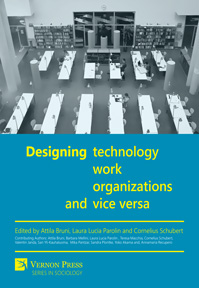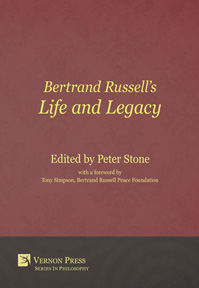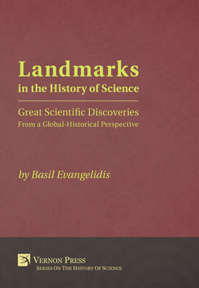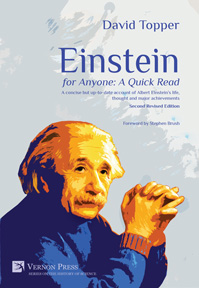Inspiring air: A history of air-related science
by Pere Grapí (Universitat Autònoma de Barcelona, Spain)
Purchase this book
(click here to change currency)
| Recommended by CHOICE, November 2019 Vol. 57 No. 3 |
Eudiometers were instruments originally devised for checking the ‘goodness’ of common air. Seeking to be more than just a chronological inventory of eudiometers, this book presents a unique retrospective of these fascinating apparatuses from the end of the eighteenth century to the mid-nineteenth century.
By paying particular attention to the experimental procedures involved over the course of the test, this book aims to understand and explore how eudiometers function, to describe the materials used in making them and the different reagents employed in each eudiometrical test. Importantly, eudiometers were employed within a variety of spheres including human and animal health, gas analysis, chemical theory, plant and animal physiology, atmospheric composition, chemical compound composition, gas lighting, chemical revolution and experimental demonstration.
Finally, this book looks to redress the existing imbalance in the history of chemistry regarding the attention given to theoretical aspects of chemistry in comparison to chemical practice and apparatus. The few existing accounts of chemical devices written in the past century have not been sufficiently helpful for the understanding of experimental practice in chemistry. Until now no work that deals exclusively with eudiometers and gas analysis from a historical standpoint has been published. Thus, this book will not only cast new light on the subject, but will also contribute to further research on the history of chemical instruments.
List of Figures
List of Tables
Acknowledgments
Introduction: Instruments and Procedures in Practical Chemistry
Sources and objects in the practice of chemistry
The migration of instruments from artisanal to academic chemistry
The instrumental view of the chemical approach to experimental physics
A new place to locate physico-chemical instruments in the chemistry laboratory
1.The Nitrous Air Test and the First Eudiometers
1.1. The question of the goodness of air
1.2. Priestley’s experimental device
1.3. Landriani’s nitrous air eudiometer and the imagined “Priestley’s eudiometer”
1.4. Fontana’s first-generation of nitrous air eudiometers
1.5. Instrumentalizing the nitrous air test. The contributions of Megallan and Gérardin
1.5.1.Magellan’s contribution
1.5.2.Gérardin’s eudiometer
1.6. Summary
2. The Inflammable Air Test and Volta’s Eudiometer
2.1. Volta’s approach to the chemistry of airs
2.2. Inventing the inflammable air eudiometer
2.3. The development of the inflammable air eudiometer
2.3.1.Volta’s first portable eudiometer
2.3.2.Interpreting what occurred inside the eudiometer
2.3.3.Completing the device of the inflammable air eudiometer
2.3.4.Addressing the synthesis of water
2.4. Volta’s return to eudiometrical publications
2.5. Summary
3. Nitrous Air Eudiometers at Work
3.1. Fontana-Ingenhousz’s second generation of nitrous air eudiometers
3.2. Fontana-Ingenhousz’s eudiometer as an essential instrument for monitoring the first studies on the influence of sunlight on plants
3.3. Tiberio Cavallo and the assessing of nitrous air eudiometers
3.4. Priestley’s disdain for Fontana-Ingenhousz eudiometer. The controversy over the effect of sunlight on air purification by plants
3.5. Cavallo vs. Magellan or Priestelyans vs. Fontanists. Two different approaches to experimental data processing
3.6. Jean Senebier: Criticisms from continental Europe
3.7. Henry Cavendish: The nitrous air test and Fontana-Ingenhousz’s eudiometer under scrutiny
3.7.1.Cavendish’s reasons for improving Fontana-Ingenhousz’s eudiometer
3.7.2.The problematic endpoint of the nitrous air test
3.7.3.Testing Fontana-Ingenhousz’s eudiometer and the need for a scale of air purity
3.8. The nitrous air test in the hands and mind of Lavoisier
3.9. Fontana’s nitrous air test revisited
3.10.The nitrous air test in the research for a therapeutic use of dephlogisticated air
3.11.Replying to criticisms of Fontana-Ingenhousz’s nitrous air test. The last calls for recognition of his eudiometer
3.12.The late nitrous air eudiometer of Adam Wilhelm Hauch
3.13.Summary
4. Portable Eudiometry. The Cradle of the Phosphorous Eudiometers
4.1. The early portable nitrous air eudiometers of Ingenhousz, Saussure and Achard
4.1.1.Ingenhousz
4.1.2.Saussure
4.1.3.Achard
4.2. The portable phosphorous eudiometers of Achard, Reboul and Giobert
4.2.1.Achard
4.2.2.Reboul
4.2.3.Giobert
4.3. A plausible source of inspiration for Giobert’s eudiometer
4.4. Summary
5. The Alkaline Sulphide Based Eudiometers
5.1. Scheele’s experiments on air in the background of alternative eudiometrical tests
5.2. The eudiometrical test of a wet paste made with iron filings and sulphur
5.3. Lavoisier. Enabling Scheele’s alkaline sulphide solutions
5.4. Reprising the inverted retort apparatus with solid potassium sulphide
5.5. Antoni de Martí Franquès. Improving the sulphide test
5.6. The reception of Martí’s eudiometrical test
5.7. Summary
6. The Evolution of the Phosphorous Eudiometer
6.1. The theoretical and experimental background to laboratory bench phosphorous eudiometers
6.1.1.Lavoisier’s experiments on the combustion of phosphorous
6.1.2.Lavoisier’s experiments on animal respiration
6.2. Séguin and the fast combustion of phosphorous eudiometer
6.3. Berthollet and the slow combustion of phosphorous eudiometer
6.3.1.Berthollet’s concern with the atmospheric air in his intellectual context
6.3.2.Berthollet’s Egyptian venture in the background of a new eudiometrical approach
6.3.3.Göttling’s alternative view to Lavoisier’s theory of oxygen
6.3.4.Berthollet’s approach to the slow combustion of phosphorous as a eudiometrical test
6.4. The oxygenometer of Georges-Frédéric Parrot
6.5. Lazzaro Spallanzani. Between animal respiration and the updating of Giobert’s eudiometer
6.5.1.Spallanzani’s portable eudiometer. Redesigning Giobert’s apparatus
6.5.2.Final observations on the combustion and chemiluminescence of phosphorous
6.6. Summary
7. Metamorphoses of the Nitrous Air Test
7.1. Alexander von Humboldt: Naturalist, explorer and chemist
7.1.1.A view of the chemical facet of Humboldt’s scientific career
7.2. Humboldt’s intensive work on chemistry in Paris
7.2.1.The iron sulphate variant of the nitrous gas test
7.2.2.Nitrous gas test vs. phosphorous test
7.2.3.The dispute with Berthollet on the slow combustion of phosphorous
7.2.4.Eudiometry for agricultural purposes
7.3. Back on the other side of the channel: Davy, Hope, Pepys and Henry
7.3.1.Humprey Davy (1788-1829)
7.3.2.Thomas Charles Hope (1766-1844)
7.3.3.William Haseldine Pepys (1775-1856)
7.3.4.William Henry (1774-1836)
7.4. Summary
8. Reinventing and Consolidating Eudiometers at the Beginning of the Nineteenth Century
8.1. John Dalton: Laying the foundations for the reconversion of the nitrous gas test
8.1.1.A beginner in chemistry and eudiometry
8.1.2. The eudiometrical context of Dalton’s law of multiple proportions
8.2. Gay-Lussac’s commitment to Volta’s and nitrous gas eudiometers
8.2.1.Collaborative work with Humboldt on the composition of water and atmospheric air
8.2.2.The study of the oxides of nitrogen
8.2.3.Reshaping the nitrous gas eudiometer
8.3. Summary
9. From Eudiometry to Gasometry
9.1. Volta’s eudiometer as a gas mixture analyser
9.1.1.Some early attempts
9.1.2.Gas lighting manufacturing in Great Britain
9.2. Gay-Lussac: A renewed version of Volta’s eudiometer and the search for the nature of prussic acid
9.3. Bunsen: The birth of gasometry in the context of the cast iron industry
9.3.1.Rectifying sources of error in Volta’s eudiometer
9.3.2.The algebraic approach to eudiometric analysis
9.4. Regnault: Gasometry in the context of the research on animal respiration
9.4.1.Regnault’s eudiometrical apparatus
9.4.2.A worldwide survey on the composition of atmospheric air
9.5. The agenda of gasometry in the second half of the nineteenth century
9.6. Summary
10. Concluding Remarks
10.1. Preliminary observations
10.2. Experimental procedures, material equipment and resemblances among eudiometers
10.2.1. The nitrous gas eudiometer
10.2.2. Volta’s eudiometer
10.2.3. Phosphorous eudiometer
10.2.4. Resemblances
10.3. Theoretical accommodation
10.4. Eudiometers in context
10.5. Eudiometers and the chemical revolution
10.6. The didactic second life of some eudiometers
Appendix
I. Fontana’s fourth nitrous air macchina
II. Gérardin’s nitrous air eudiometer
III. Lavoisier’s experimental results and calculations for the determination of the vital air content and the purity of the nitrous air
IV. The nitrous air eudiometer of Adam Wilhelm Hauch
V. Achard’s portable nitrous air eudiometer
VI. Parrot’s eudiometer (oxygenmeter)
Bibliography
Index
Pere Grapí graduated in chemistry from the University of Barcelona in 1975. He later obtained a master’s degree in the History of Science from the Autonomous University of Barcelona in 1990, before completing his PhD at the same university in 1996. Spending some periods working as an Associate Professor of the History of Science at the Autonomous University of Barcelona, he is now an independent scholar whose main research interests are focused on the history of chemistry during the late 18th and early 19th centuries, as well as on the relation between the history of science and teaching. Grapí is also an affiliated member of the Centre for the History of Science of the Autonomous University of Barcelona and member of the Council of the Catalan Chemical Society.
The idea for this book came about when Grapí was working as an advisor for a research paper conducted by three of his final year high school students during the academic year of 2003-2004. Inspired by their research into making a replica of Volta’s pile and reproducing some of the accompanying historical experiments, Grapí became increasingly interested in exploring the emergence of electricity in the practice of chemistry. He, therefore, felt obliged to familiarize himself with the contributions of prominent figures such as Volta and Priestley. Notably, both Volta and Priestley made important contributions to the development of eudiometers. Thus, quite unwittingly, it was those three former students who remade Volta’s pile that motivated him to focus his attention on eudiometers rather than other chemical apparatuses. However, it wasn’t until his retirement from science teaching in 2012 that he was able to dedicate the time required to complete this book.
air analysis, chemical instrument, air respirability, eudiometer, goodness of air, experimental procedures, medical therapeutics, plant and animal physiology, atmospheric composition, chemical revolution, chemical practice, chemical composition, eudiometrical test, chemical knowledge, experimental equipment, scientific controversy
Subjects
History
Series
Series on the History of Science
Related services
Find in a library near you Download HQ cover Find in Bookshop.org Find this title in AmazonSee also
Bibliographic Information
Book Title
Inspiring air: A history of air-related science
ISBN
978-1-62273-738-3
Edition
1st
Number of pages
380
Physical size
236mm x 160mm

![Inspiring air: A history of air-related science [Paperback]](/file/8822/ce09d0ce1a52444554e40c804d0598b1/1556805584.jpg)







